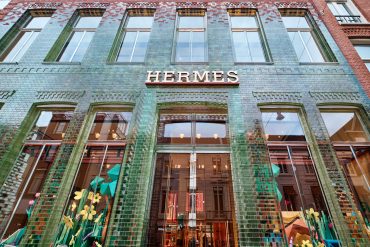
Luxury Jewelry Sales Rise 10.1% as Overall Spending Declines
5 minute read

Luxury jewelry market defies retail slowdown as consumers seek investment-grade pieces amid economic uncertainty
Key Takeaways
- Jewelry sales surge 10.1% in May while overall U.S. luxury spending declined 1.7% year-over-year, driven by rising gold prices and investment appeal
- Luxury handbag brands face 30-40% price increases without corresponding innovation, reducing consumer value perception according to Citigroup analysis
- Fine jewelry resale market grows 22% for items valued above $5,000 on platforms like The RealReal, reflecting shift toward sustainable luxury consumption
Introduction
U.S. consumers are redirecting their luxury spending toward jewelry while cutting back on handbags and clothing, creating a notable shift in high-end retail patterns. According to Citigroup’s credit card data analysis, luxury jewelry consistently outperforms other categories as overall luxury spending remains under pressure.
This trend reflects changing consumer priorities as shoppers increasingly view jewelry as investment pieces with intrinsic value. Rising gold prices and the perception of superior emotional value drive this preference shift in the luxury market.
Key Developments
Luxury retail spending patterns show distinct category divergence through the first five months of this year. While overall luxury spending fell compared to 2024, jewelry demonstrated remarkable resilience with monthly growth every month since September.
The jewelry category attracts both higher spending per customer and increased customer numbers, unlike other luxury segments. Despite a 2.7% drop in customers for high-end brands overall, remaining buyers increased their average spend by 11.7%.
Luxury watch sales present mixed signals with 14.7% growth in May spending, yet major brands experienced a 10% annual decline. This disparity stems from retailers building inventory ahead of potential tariffs on Swiss goods.
Market Impact
Credit card data reveals jewelry’s exceptional performance with 10.1% year-over-year growth in May, while luxury spending broadly declined 1.7%. Even top-tier brands like Hermès managed only 0.2% growth during the same period.
The resale market demonstrates similar trends, with fine jewelry sales above $5,000 growing 22% on The RealReal platform. Luxury handbags saw 13% buyer growth in the secondary market, indicating price sensitivity in primary retail channels.
Entry-level luxury categories face pronounced pressure as economic uncertainty erodes consumer excess savings. This dynamic creates relative outperformance for high-value jewelry and watches compared to accessible luxury items.
Strategic Insights
The jewelry advantage stems from perceived investment value combining precious metals content with emotional significance. Unlike handbags, which face 30-40% price increases without corresponding innovation, jewelry benefits from rising commodity prices that enhance intrinsic worth.
Luxury brands increasingly integrate technology solutions including blockchain authentication certificates and AI-powered condition assessments. These innovations particularly attract younger, tech-savvy consumers seeking digital experiences alongside traditional luxury.
The booming resale market reflects consumer demand for sustainability and affordability. Brands now integrate resale into business models through buy-back programs and platform partnerships, creating new revenue streams while addressing changing consumer values.
Expert Opinions and Data
Citi analyst Thomas Chauvet attributes jewelry’s appeal to superior intrinsic and emotional value. “Perhaps the piece of jewelry gives you superior intrinsic value given the precious metals content and superior emotional value and meaning,” Chauvet explains.
He emphasizes the investment rationale behind jewelry purchases, noting how advantageous gold price increases substantiate these decisions. According to CNBC, this investment mindset drives broader luxury retail trends toward meaningful purchases over impulse buying.
Chauvet cautions against interpreting May’s improved consumer sentiment as a definitive market shift. Economic factors including dollar weakness, geopolitical tensions, and potential tariffs present ongoing risks to luxury spending patterns.
Conclusion
The luxury market experiences a fundamental reorientation as consumers prioritize investment-grade jewelry over traditional categories like handbags and clothing. This shift reflects both economic pressures and changing value perceptions among high-end shoppers.
Rising gold prices, enhanced emotional value, and integration of resale markets position jewelry as the standout performer in an otherwise challenging luxury retail environment. The trend establishes jewelry as a preferred store of value during uncertain economic times.





